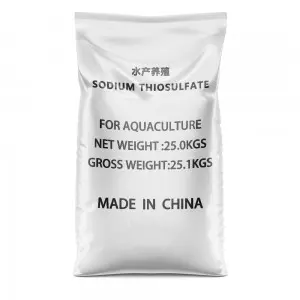



Chemical Solutions for Urban Water Treatment and Quality Enhancement
Municipal Water Treatment Chemicals Ensuring Safe Drinking Water
Water is an essential resource for life, and its quality is paramount for public health. Municipal water treatment facilities play a crucial role in ensuring that the water delivered to households and businesses is safe for consumption. To achieve this goal, various chemicals are utilized throughout the treatment process to remove impurities, disinfect, and improve the overall quality of drinking water.
1. Coagulation and Flocculation Chemicals
The water treatment process typically begins with coagulation and flocculation. This step involves adding chemicals known as coagulants, such as aluminum sulfate (alum) or ferric chloride, to the water. These coagulants help destabilize and aggregate suspended particles, including dirt, silt, and organic matter, forming larger particles called flocs. This process is crucial because smaller particles can be challenging to remove in subsequent filtration stages. Flocculation involves gentle stirring to allow the flocs to grow larger and settle at the bottom of the treatment tank.
After the coagulation and flocculation stages, the next step is disinfection, which is vital to eliminate harmful pathogens that may be present in the water. Chlorine, chloramines, ozone, and ultraviolet (UV) light are common disinfection agents used.
Chlorine is the most widely used disinfectant due to its effectiveness and cost-efficiency. It not only kills bacteria, viruses, and other microorganisms but also provides residual disinfection as water flows through the distribution system. However, the formation of disinfectant by-products (DBPs) when chlorine reacts with organic matter is a concern, leading to an increased focus on alternative methods like UV disinfection and ozone treatment.
3. pH Adjustment Chemicals
The pH level of water affects not only its taste but also the effectiveness of disinfection and the solubility of metals. Lime, sodium hydroxide, or sodium bicarbonate may be added to adjust the pH of the water to a neutral level, typically between 6.5 and 8.5. Maintaining the proper pH is essential to prevent corrosion of pipes and to ensure optimal disinfection.
municipal water treatment chemicals

4. Flushing and Scale Control Agents
To help maintain the infrastructure of water distribution systems and ensure a consistent supply of high-quality water, scale control agents like orthophosphate are often injected. These chemicals help coat pipes, reducing the build-up of mineral scale and preventing leaching of metals like lead and copper from plumbing systems. This is particularly important in older systems where corrosion might be a concern.
5. Post-Treatment Adjustments
Once the primary treatment processes are complete, additional chemicals may be introduced to further refine the water quality. For example, activated carbon can be added to reduce tastes and odors, especially those originating from natural organic matter. Fluoride may also be introduced to promote dental health within the community, though its use is often a subject of public debate.
6. Regulatory Compliance and Safety
Municipalities must adhere to strict regulatory standards set by government agencies, such as the Environmental Protection Agency (EPA) in the United States, which establishes maximum contaminant levels (MCLs) for various substances. Regular monitoring and reporting are essential to ensure compliance, and water treatment plants must implement quality assurance measures to maintain the effectiveness of treatment chemicals.
Conclusion
The chemicals used in municipal water treatment are vital for delivering safe and clean drinking water to communities. With advancements in treatment technologies and increased regulatory oversight, water treatment facilities continue to evolve, striving to provide the highest quality of water possible. Public awareness and education about water treatment processes can foster greater appreciation for this critical infrastructure and the importance of protecting our water resources. By effectively utilizing these chemicals, municipalities can ensure they meet the demands of public health and environmental sustainability.
-
Why Sodium Persulfate Is Everywhere NowNewsJul.07,2025
-
Why Polyacrylamide Is in High DemandNewsJul.07,2025
-
Understanding Paint Chemicals and Their ApplicationsNewsJul.07,2025
-
Smart Use Of Mining ChemicalsNewsJul.07,2025
-
Practical Uses of Potassium MonopersulfateNewsJul.07,2025
-
Agrochemicals In Real FarmingNewsJul.07,2025
-
Sodium Chlorite Hot UsesNewsJul.01,2025










